I want to start this article by saying that I don’t think of this list as a definitive ranking of which Studio Ghibli films are better than others, look at them more as just my personal recommendations. The order isn’t set in stone and places could be swapped after repeat viewings. Trying to rate these films is a fairly arbitrary exercise, as I believe they’re unique in their ability to stir heartwarming feelings of wonder and awe in viewers. Those emotions are very personal and each of them can resonate differently from one person to the next. A film that may strike a chord with someone may bemuse the next.
I’ve seen many rankings of this studio’s titles, and they vary wildly. I’ve seen some films at the bottom of one person’s list, that are at the top of another’s. How you view them is even a matter of personal preference. I prefer the English dubbed versions as the voice casts are always impressive and it allows me to relax and really enjoy the mesmerising animation. To others, this is unthinkable and they must be viewed in the original Japanese language with subtitles; as I said, to each his own.
If you haven’t seen any of them before, I’m seriously jealous, you’re in for many treats. As all of the films will be dropping on Netflix in the coming months, I’d urge you to watch as many as possible, as they’re all worthy of your time for the incredible animation alone. Then you can make up your own mind, in the meantime, here’s a rough guide to the major ones to look out for:
10. Ponyo (’08)

Ponyo is the first film on the list written and directed by Ghibli’s own Walt Disney: Hayao Miyazaki. He’s responsible for most of the studio’s output over the years and therefore most of the titles on this list. This film is a loose interpretation of the original version of The Little Mermaid by Hans Christian Andersen, the biggest difference being that the main characters are young children. Forget Stranger Things; this film contains the sweetest child romance you’ll ever see.
Most Ghibli films fall into three categories, the more adult ones, coming-of-age and those aimed at children. This one definitely falls in the latter, but there’s always something for the grown-ups in each of these films and it’s perhaps only them that can fully appreciate the cutest love story ever. The English voice actors include a perfectly cast Cate Blanchett and Liam Neeson, along with Matt Damon.
9. Whisper of the Heart (’95)
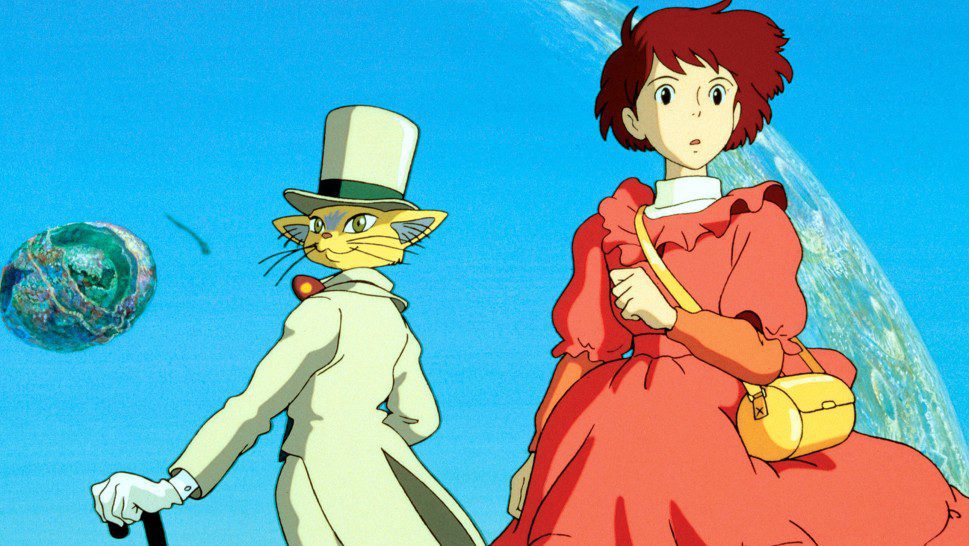
Written by Miyazaki, Whisper of the Heart is based on the Manga of the same name by Aoi Hiiragi and Directed by Yoshifumi Kondō. Unfortunately, it would be his only directing role before his untimely death at the age of 47, due to an aneurysm. Tragically, the Doctors said that it was brought on by overworking himself. He was the only person other than Miyazaki and Isaho Takahata to helm a film for the studio for over seven years until the film’s spin-off: The Cat Returns. The hope was that he would become the successor to both, but sadly, it wasn’t meant to be.
At least he was able to leave this gem behind, a coming-of-age love story between two creatives. The boy, Seiji’s dream is to become a master Luthier (violin-maker) and the girl, Shizuki’s is to be a Writer. She writes stories based on a cat statuette called “The Baron,” that she sees in Seiji’s Grandfather’s antiques shop. The story is tender, touching and inspirational. It was the highest-grossing film in Japan in ’95 when it was released and also features a whimsical Japanese cover of the song “Country Roads.” The spin-off goes full fantasy and focuses on one of The Baron’s adventures, it’s also one to watch that only just missed out on this list.
8. My Neighbour Totoro (’88)
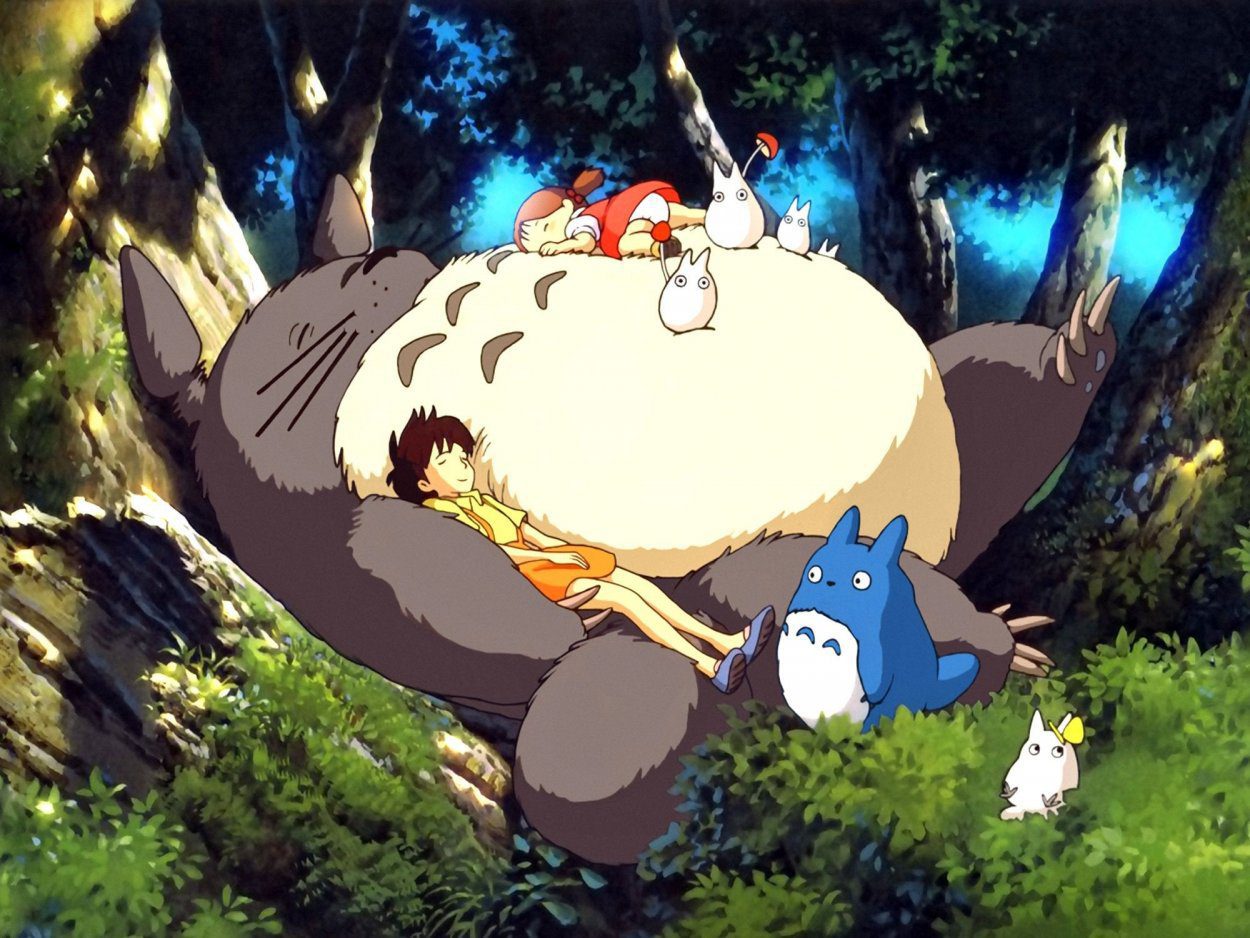
Totoro is Japan’s equivalent of Mickey Mouse. He’s a big, furry, loveable wood spirit who can take you on a magical ride when he summons the Cat Bus. It’s the most iconic film that Miyazaki both wrote and directed from his own original ideas. The film was critically acclaimed, has won many awards, has a cult following and grossed over $1 billion in merchandise alone, $1.5 billion when including home video sales and box office. It’s always featured in top animated film lists, even being ranked number 1 by Terry Gilliam in one he made for TimeOut. It was also ranked the highest-rated animated film of all time by critics in Sight & Sound in 2012.
The story is based around two young sisters who are struggling with their Mother being hospitalised long-term. Totoro and his wood spirit friends help them to cope in various ways, becoming loving companions to them. It’s just as sweet as it sounds, if not more so. Of all the Ghibli films, this one really gives you those warm, fuzzy feels in all the right places. It would be higher in my recommendations, but this is definitely one for the kid’s category (even though grown-ups love it just as much) and I prefer the more adult films. I wouldn’t argue with anyone who says that this is their favourite though, it’s easy to see why.
Credit is due to Art Director Kazuo Oga, whose animation style for this film would go on to be the trademark for the studio going forward. The film captures the simple, innocent joys of childhood, much like a Japanese equivalent to Winnie the Pooh but much more sophisticated. The character is credited as being responsible for much positivity in Japan and has even been a mascot for preserving rural areas there. Also, Totoro’s theme song is so catchy but you won’t mind it being stuck in your head, it’s just as endearing as the character. The English voice cast includes the very fitting Dakota and Elle Fanning as the two young sisters.
7. Kiki’s Delivery Service (’89)
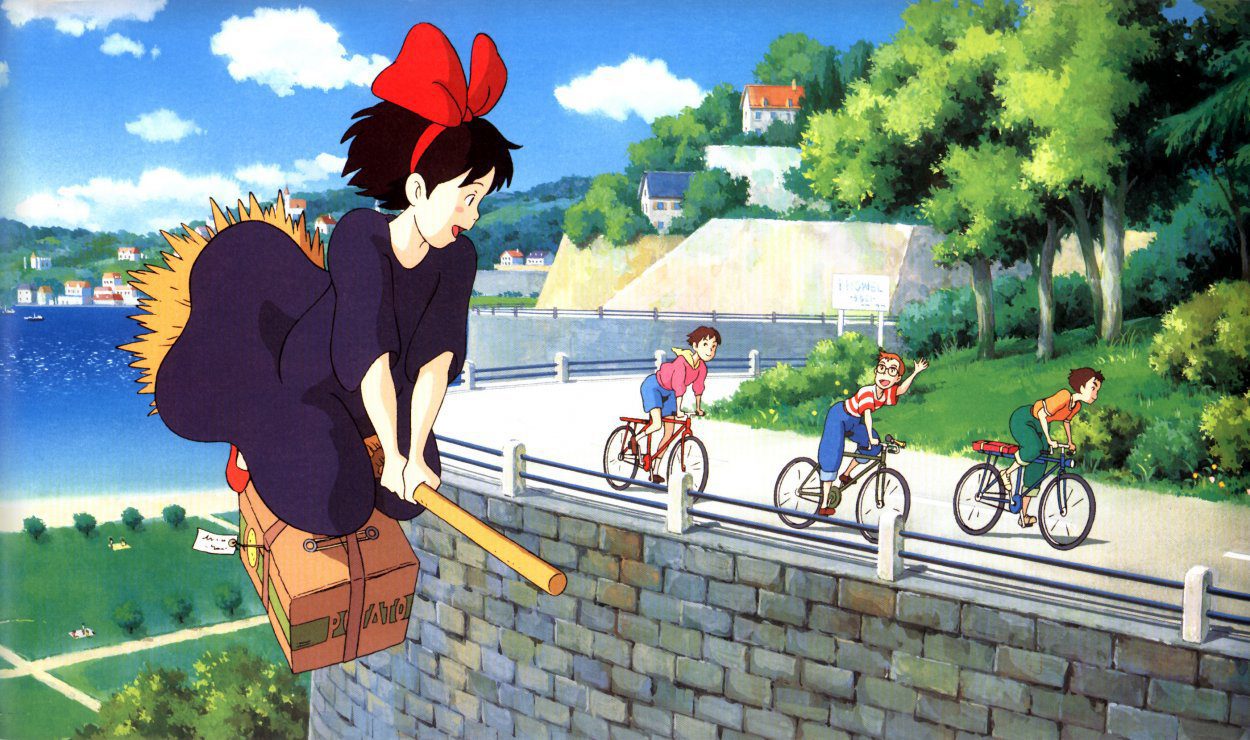
Kiki’s Delivery Service inhabits a similar space to Totoro and feels like a spiritual sequel. It’s a heart-warming story that follows a young, teenage witch as she leaves home for the first time. The sense of adventure and unbridled possibility is palpable as Kiki sores through the sky on her broom, looking for her new home. I can’t emphasise enough how it captures those feelings of flying the nest. Whenever I watch it, all the emotions I felt when I first moved to London come flooding back and I remember just how potent they were.
She settles on a picturesque port town and very quickly makes a splash. Kiki puts her flying skills to good use as a delivery girl and befriends a geeky boy, Tombo, who has a passion for aviation and is therefore in awe of her ability. All seems well until she falls ill and loses her powers, no doubt a metaphor for acclimating to a new environment. The story then addresses the question of whether Kiki can get her life back in order in time to help her friends when they need her most.
Again, written, directed and produced by Miyazaki, but this time based on a novel of the same name by Eiko Kadono. The book was based in Northern Europe, so Miyazaki and his team travelled to Stockholm and the island of Gotland in Sweden for inspiration; this really shows in the fresh look of the town. The themes of independence, self-doubt and growth are as powerful as they are timeless. Anyone who has ever ventured far from home for the first time can relate. This film is life-affirming and an absolute delight in the way it tackles these issues. The English voice cast is fun and includes Kirsten Dunst and the late Phil Hartman, of The Simpsons fame, in his final speaking role.
6. Howl’s Moving Castle (’04)
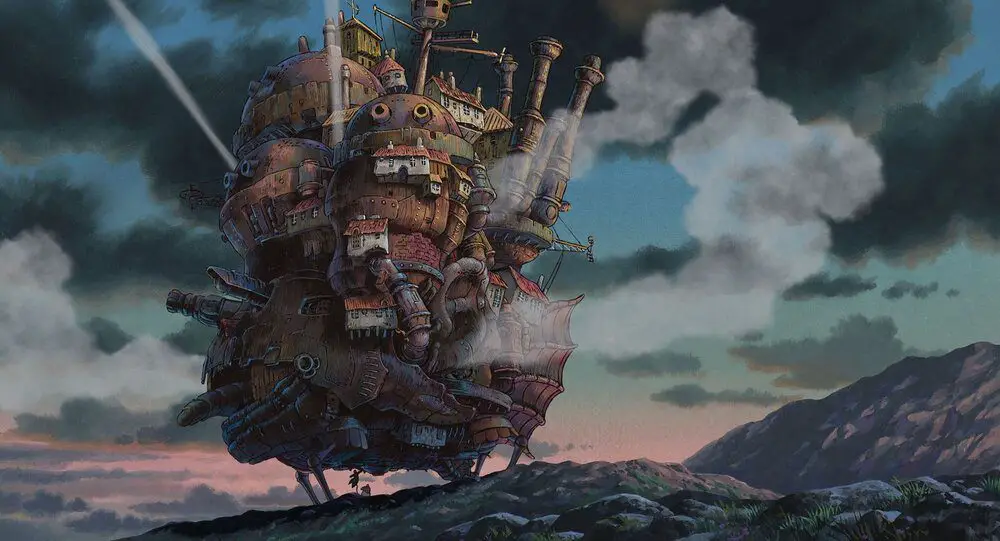
I see Howl’s Moving Castle as the wild card of the pack that is the Ghibli films, as this is by far the most polarising one. I’ve seen it towards the bottom and at the top of lists more than any other in the series. It was the first of the studio’s titles I saw at the cinema and I clearly remember taking my little brother with me to see it. We both loved it and for him, it ignited his passion for the Ghibli films. I believe the reason that it fails to strike a chord with some is that the story is as sporadic as the opinions are of it. It’s very fast-paced and each event mounts on top of the last to create a sprawling structure of a story.
I see all of these films as very dreamlike and therefore think that as a one-off, this works in conjunction with the other elements. If all of the films were like this, it’d be an issue, but as this film tackles the more adult matters of war, I believe it ends up capturing a similar spirit to the Lord of the Rings films. As suggested by the title, the characters are always on the move in the exquisitely designed castle, encountering new places, people and hardships. It’s a very unique film from the studio in this respect and perhaps the same reason why some have taken a bit of an affront to it. Despite this, It’s still very critically acclaimed, won many awards and even an Oscar nomination.
Miyazaki is once again Writer and Director, adapting the story from a British book by Diana Wynne Jones. As mentioned before, this film has deep anti-war themes and an underlying message about compassion. This was Miyazaki’s response in opposition to the United State’s invasion of Iraq, which he “had a great deal of rage about.” He has also said that it’s his favourite creation as it “conveys the message that life is worth living.” It went on to become one of the most financially successful Japanese films in history. The English voice cast includes a very suitable Christian Bale, with Emily Mortimer and Billy Crystal.
5. The Tale Of The Princess Kaguya (’13)
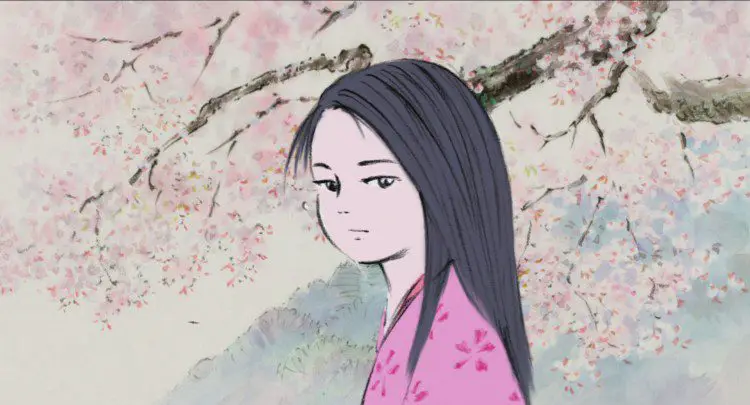
Right, now we’re in the Top Five and regardless of where you would rank these, nobody can deny that they’re all nothing short of masterpieces. This film is the first and only in my list that has no involvement from Miyazaki, just to prove that it’s not all about him. It comes from the studio’s second in command: Isaho Takahata, who co-wrote and directed this beauty. Once again, sadly, it would be his last role as Director before his death from lung cancer at the much more acceptable age of 82, though still sad nonetheless. He was honoured in the Ghibli Museum by his colleagues, one of the first places I recommend anyone goes to if they visit Tokyo. Based on an oddly anonymous literary tale titled: “The Tale of the Bamboo Cutter,” it became Japan’s most expensive film to date and also secured an Oscar nomination.
The story follows the life of a baby girl who appears in the bamboo one day through some kind of divine power along with gold and fine clothes in much the same way so she can dress like a Princess. Her father uses the wealth from these resources to move their family to the city so she can become a real Princess, tearing her away from her friends and all she knows. She struggles with being thrown into nobility headfirst from one day to the next and resents its restrictions. After being named Princess Kaguya, she has many male suitors who come calling, including the Emperor himself. The story becomes about how she tries to avoid an arranged marriage and whether her auspicious origin will come back into play.
This is possibly the studio’s film that has the most depth and deals with real, heart-wrenching situations. It becomes a commentary on how childhood should be spent, the trappings that wealth can entail and true happiness. It’s hard for me to convey just how tragic this story is, yet it’s told in such a beautiful way. The animation is made entirely from watercolours in a very abstract and minimal style. The definition and detail of each frame also fluctuate in response to the content of the scene, a genius idea that’s executed perfectly.
Takahata deserves a lot of credit for his ambition in trying something so radically different and fresh. Miyazaki is a master at what he does, so it’s only through this daring attempt to push boundaries in both story and animation that this film shoots up the list straight into the upper echelon. The English voice cast is the most impressive yet and includes a pitch-perfect Chloë Grace Moretz, with James Caan, Mary Steenburgen, Lucy Liu and James Marsden.
4. Nausicaä of The Valley of the Wind (’84)

Although not strictly a Ghibli film as it was made by the same team before the studio was founded, it’s considered as such and has been included in releases of their full collection. Nausicaä of The Valley of the Wind was written and directed by Miyazaki and also produced by Takahata. It was based on the Manga of the same name that Miyazaki wrote and illustrated himself. It really ticks all the boxes as it’s a post-apocalyptic, sci-fi, fantasy, adventure film. The duo chose a smaller studio, Topcraft, whose work they were familiar with and who they knew had the talent to translate the sophisticated Manga to full effect.
This team included Hideaki Anno, who was assigned the task of drawing the difficult God Warrior’s attack scene, one of the most important parts of the film. He would later go on to write and direct Neon Genesis Evangelion. The whole film was made in just nine months with a budget of only $1 million. The film was critically acclaimed and a commercial success. It would go on to be a seminal piece that informed anime going forward and spawned several studios, including Ghibli. It often tops polls of the best anime films, especially in Japan.
The story’s set after an apocalyptic war, that’s left the land as a poisonous jungle. Some are doing all they can to carry on the fight and finish it, despite the damage already done. Nausicaä explores the jungle and tries to connect to its creatures in hopes of finding a way for them to co-exist. In doing so, she discovers something revelatory that could restore the environment to its former glory, if only she can put a stop to the politics and battles of the powers that be first. Many of Miyazaki’s film address man’s relationship or lack thereof with nature. As this was one of his first projects, the message is less subtle or nuanced and more direct than in his later projects.
I think of it as Ghibli’s answer to Star Wars by way of Dune, which is ironic as Rey from the recent instalment The Force Awakens is very similar to Nausicaä. There are also many scenes from that film that are strikingly similar to this one as well. Also, the gliders used in the film are so slick, even for a sci-fi film, so much so that they’ve even been developed in real life. The film is the foundation of not just Studio Ghibli, but anime in general, the intricate detail and hard work shows in every frame. A monumental achievement, especially for the time. The English voice cast includes Uma Thurman, Patrick Stewart and Shia LeBeouf.
3. Spirited Away (’01)
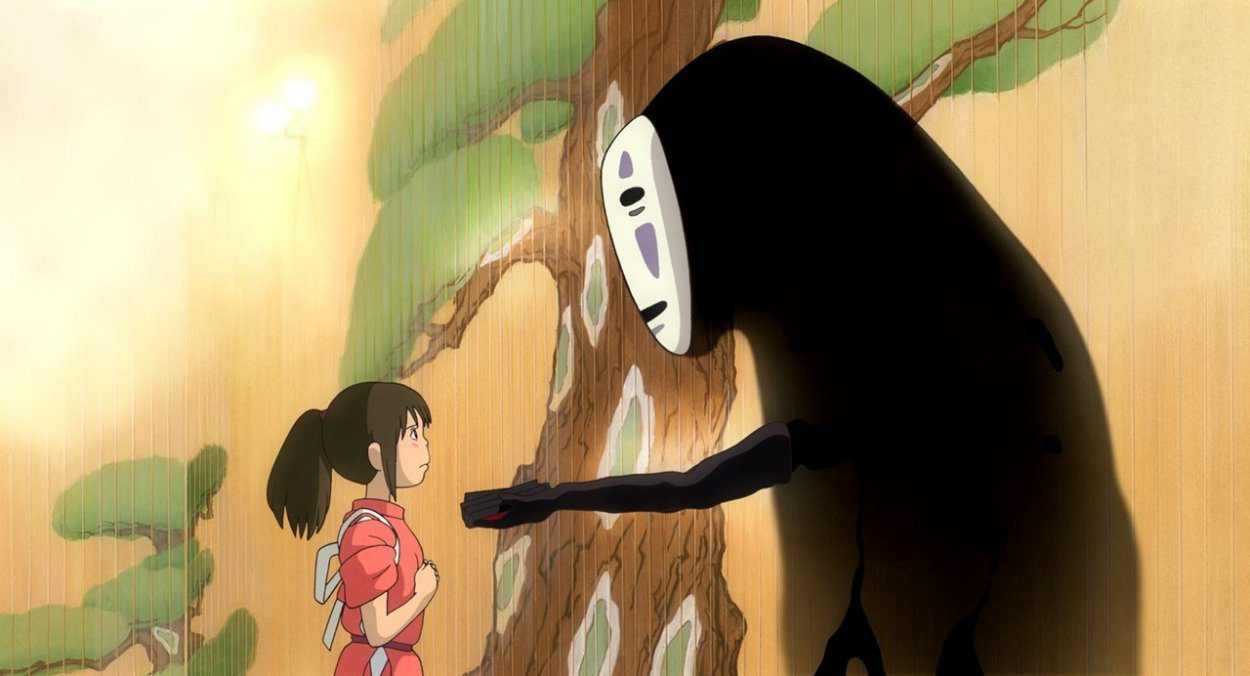
Spirited Away was the film that announced the studio to the rest of the world. Written and directed by Miyazaki yet again from his original ideas, it won the Oscar for Best Animated Feature (still the only foreign and hand-drawn film to do so), is frequently ranked among the best animated films of all time and was the highest-grossing Japanese film in history upon its release. It was voted the fourth best film of the 21st century in 2016, in a poll of hundreds of critics from around the world, making it the top animated entry in that list. It’s the ninth-highest rated film ever on Metacritic, again making it the top animated entry on the site. It also won all but a few of the numerous accolades that it was nominated for.
The story is about a young girl who accidentally enters the Japanese world of spirits and Shinto folklore with her parents. Due to their rude and greedy behaviour after trespassing, her folks are turned into pigs, and it’s up to their daughter, Chihiro, to get by in this alternate reality until she can find a way to transform her parents back and return to the human world. The narrative can seem deceptively simple but is actually a very layered exploration of themes such as consumerism, capitalism, corruption, generational differences and environmental issues. I believe it’s from this ambiguous depth that it’s universal appeal stems.
The spirits represent all the living things and parts of the environment in our world. Most of the story takes place in a Bathhouse for them, where they can come to clean away the filth of pollution and refresh themselves. How the establishment is run ruthlessly to benefit from the wealthy is what ties all the themes together. The film contains one of the studio’s biggest icons in the form of the mysterious spirit No Face and also one of its most memorable scenes, where Chihiro travels with him by train further throughout this surreal world.
It’s visually stunning, and the magical ability it has to capture dreamlike scenes is enchanting. The scores for Ghibli films are always brilliant but this one, by Miyazaki’s regular collaborator Joe Hisaishi, is particularly exquisite. Quite simply, it has it all and it needs to be seen to be believed. This may be the studio’s best film, but it relies mainly on visuals and its ethereal dream world, as well as falling in the aforementioned kid’s category. In this respect, it acts as the Japanese answer to Alice in Wonderland but with more substance. However, the remaining two films on the list have these qualities as well as epic stories to tell.
2. Laputa: Castle in the Sky (’86)
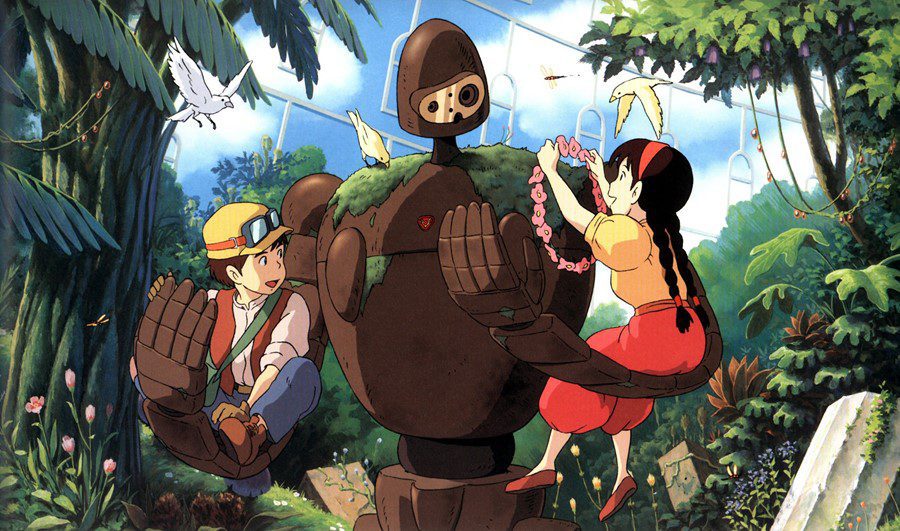
Laputa: Castle in the Sky is the first official film from the studio with the same dynamic duo of Miyazaki on writing and directing duties, with Takahata producing. It encapsulates everything Ghibli’s about, while also showcasing their incredible talents. It remains one of their most unique, as its story combines elements from their coming-of-age and more adult titles. The central characters are two young teenagers who find themselves embroiled in a conflict between a military force and pirates. The boy, Pazu, comes across the girl, Sheeta, while she is being pursued relentlessly by both parties, as she holds a special amulet that can lead one to the legendary castle in the sky.
The story is fairly classic, fantasy fare but the way in which it’s told is so rich and textured in both plot and presentation. It was a critical and commercial success, won numerous accolades, as well as often being voted one of, if not the best animated film of all time (something you may be getting tired of hearing in this list but tells you something in itself). However, the film’s true success lies in how influential it’s been in anime, video games and indeed film in general. With its perfect use of retro-futuristic steampunk technology, it’s considered to be a milestone in the genre and its first modern classic.
This sits in a rich tapestry of styles that includes medieval castle architecture, Gothic buildings and Welsh mining towns. After visiting Wales and witnessing the miner’s strike firsthand, Miyazaki admired them and was inspired to tell a story about this strong, dying breed of fighters. The film even makes use of the Sumerian script Cuneiform, the earliest system of writing for Laputa’s interactive panels and also references Hindu legends. A genius move when you think about it, as it adds substance to the castle’s ancient, mythical status.
The film also boasts one of the studio’s most iconic creations in the form of the Laputa robots; they’re equally badass as they’re zen, depending on the situation. They also seem to be a strange hybrid of technology with emotions combined. This is just one example of mixing the old with the new that’s the trademark of the film and adds mystery to the lore of the story. In essence, this is what makes the film so appealing. The English voice cast includes Anna Paquin and Mark Hamill.
1. Princess Mononoke (’97)
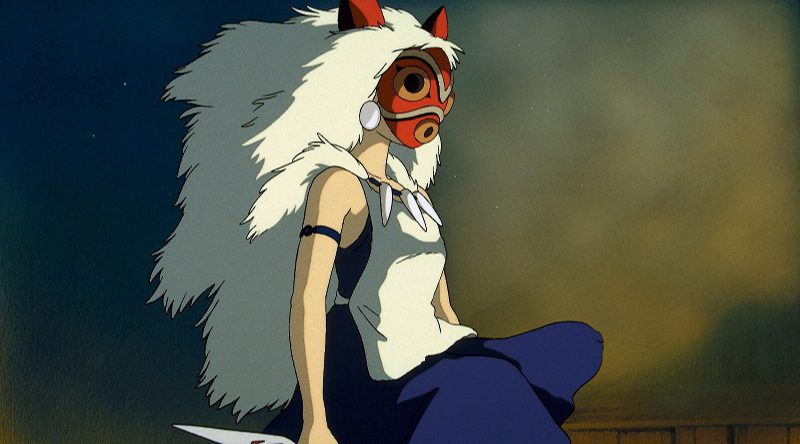
Princess Mononoke was the first Ghibli, and I should think one of the first anime films in general that I saw. Even then, at an early age, it blew my mind. I remember watching it in awe and thinking that I’d never seen anything like it before, it was like being able to watch a dream back at your leisure; as bizarre as it was engrossing. The film’s set in a period when humans are starting to have a damaging effect on the environment, due to the increased consumption of its resources. The main conflict is between the Forest Spirits and a flourishing settlement called “Iron Town,” that manufactures weapons.
Our protagonist, Prince Ashitaka is trying to find a way to weather the storm and also connect with a girl raised by wolves, the iconic San, who acts as a human embodiment of the forest’s fury. Everything builds to a climactic final battle between the town, a clan of boar and samurai. It’s just as awesome as it sounds and the stakes are high. Things aren’t so black and white however, there’s no clear hero or villain and both sides are complex characters with shades of grey. The film also contains more memorable characters than any other in the series including the Great Forest Spirit (in both forms), the Wolf Goddess Moro and my own personal favourite of all the Ghibli creations: the adorable, yet very cool Kodama.
Written and directed by Miyazaki (one last time), it was the highest-grossing film in Japan upon its release, a title it’d hold onto until passed on to Spirited Away four years later. This was one of the studio’s first to be dubbed in English and subsequently get a proper release in North America via Miramax. However, the treacherous Harvey Weinstein wanted to edit the film for the American audience. The producers responded by sending him a katana with the message: “No cuts,” a brilliant, perfect riposte.
This may have stunted its theatrical release at the time but, in the end, it was the right move. It went on to sell very well on home video and significantly increased the studio’s popularity and influence outside of Japan. It’s one of the most compelling animated films ever made and if you only watch one Ghibli film, make it this one. The English voice cast is also very impressive and includes Billy Crudup, Claire Danes, Billy Bob Thornton, Gillian Anderson, Keith David and Jada Pinkett Smith.
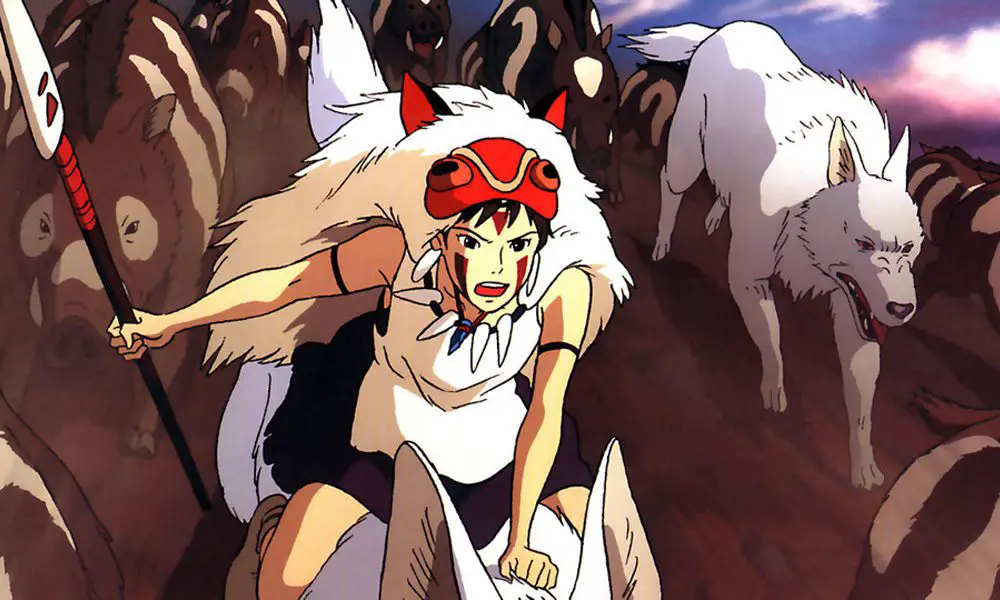
All of the Studio Ghibli films are coming to Netflix from February 1st (not in the USA though sorry folks), released as follows:
February 1st
Castle in the Sky
My Neighbor Totoro
Kiki’s Delivery Service
Only Yesterday
Porco Rosso
Ocean Waves
Tales for Earthsea
March 1st
Nausicaä of the Valley of the Wind
Princess Mononoke
My Neighbors the Yamada
Spirited Away
The Cat Returns
Arrietty
The Tale of The Princess Kaguya
April 1st
Pom Poko
Whisper of the Heart
Howl’s Moving Castle
Ponyo
From Up on Poppy Hill
The Wind Rises
When Marnie Was There
Let us know which are your favourites, and if you haven’t seen any yet, now is your chance. You won’t regret it.




